Changing Poly V-Belt yourself – manuals and video tutorials
Changing Poly V-Belt: step-by-step guides
Most viewed video tutorials on the installation of Poly V-Belt
 How to replace a serpentine belt [AUTODOC TUTORIAL]
How to replace a serpentine belt [AUTODOC TUTORIAL] How to change serpentine belt on FORD FIESTA V JH, JD [TUTORIAL AUTODOC]
How to change serpentine belt on FORD FIESTA V JH, JD [TUTORIAL AUTODOC] How to change serpentine belt / v-ribbed belt on MERCEDES-BENZ B200 (W245) [TUTORIAL AUTODOC]
How to change serpentine belt / v-ribbed belt on MERCEDES-BENZ B200 (W245) [TUTORIAL AUTODOC] How to change serpentine belt on OPEL CORSA D [TUTORIAL AUTODOC]
How to change serpentine belt on OPEL CORSA D [TUTORIAL AUTODOC] How to change serpentine belt / v-ribbed belt on RENAULT SCENIC 2 (JM) [TUTORIAL AUTODOC]
How to change serpentine belt / v-ribbed belt on RENAULT SCENIC 2 (JM) [TUTORIAL AUTODOC] How to change poly V-belt, idler pulley on FORD MONDEO 3 TUTORIAL | AUTODOC
How to change poly V-belt, idler pulley on FORD MONDEO 3 TUTORIAL | AUTODOC How to change serpentine belt / v-ribbed belt on AUDI A4 B8 Saloon [TUTORIAL AUTODOC]
How to change serpentine belt / v-ribbed belt on AUDI A4 B8 Saloon [TUTORIAL AUTODOC] How to change serpentine belt on MERCEDES-BENZ W203 C-Class [TUTORIAL AUTODOC]
How to change serpentine belt on MERCEDES-BENZ W203 C-Class [TUTORIAL AUTODOC] How to change serpentine belt / v-ribbed belt on VW POLO 4 (9N) [TUTORIAL AUTODOC]
How to change serpentine belt / v-ribbed belt on VW POLO 4 (9N) [TUTORIAL AUTODOC] How to change serpentine belt / v-ribbed belt on OPEL CORSA C (F08, F68) [TUTORIAL AUTODOC]
How to change serpentine belt / v-ribbed belt on OPEL CORSA C (F08, F68) [TUTORIAL AUTODOC] How to change Alternator belt on MAZDA 2 DY TUTORIAL | AUTODOC
How to change Alternator belt on MAZDA 2 DY TUTORIAL | AUTODOC How to change serpentine belt / v-ribbed belt on SKODA FABIA 1 (6Y5) [TUTORIAL AUTODOC]
How to change serpentine belt / v-ribbed belt on SKODA FABIA 1 (6Y5) [TUTORIAL AUTODOC]![How to change serpentine belt / v-ribbed belt on FIAT PUNTO 199 [TUTORIAL AUTODOC]](https://i.ytimg.com/vi/FpAJpyM-moo/mqdefault.jpg) How to change serpentine belt / v-ribbed belt on FIAT PUNTO 199 [TUTORIAL AUTODOC]
How to change serpentine belt / v-ribbed belt on FIAT PUNTO 199 [TUTORIAL AUTODOC]![How to change serpentine belt / v-ribbed belt on FIAT DOBLO 1 (223) [TUTORIAL AUTODOC]](https://i.ytimg.com/vi/SgO6QjaZZv8/mqdefault.jpg) How to change serpentine belt / v-ribbed belt on FIAT DOBLO 1 (223) [TUTORIAL AUTODOC]
How to change serpentine belt / v-ribbed belt on FIAT DOBLO 1 (223) [TUTORIAL AUTODOC]![How to change serpentine belt / v-ribbed belt on VW GOLF 4 (1J1) [TUTORIAL AUTODOC]](https://i.ytimg.com/vi/_WIxpvy6HqM/mqdefault.jpg) How to change serpentine belt / v-ribbed belt on VW GOLF 4 (1J1) [TUTORIAL AUTODOC]
How to change serpentine belt / v-ribbed belt on VW GOLF 4 (1J1) [TUTORIAL AUTODOC]![How to change serpentine belt / v-ribbed belt on TOYOTA AYGO 1 (AB10) [TUTORIAL AUTODOC]](https://i.ytimg.com/vi/A3hlPJQ7aOw/mqdefault.jpg) How to change serpentine belt / v-ribbed belt on TOYOTA AYGO 1 (AB10) [TUTORIAL AUTODOC]
How to change serpentine belt / v-ribbed belt on TOYOTA AYGO 1 (AB10) [TUTORIAL AUTODOC]
Replacing Poly V-Belt: TOP manuals for changing
Video instructions for changing the Poly V-Belt – playlist by AUTODOC CLUB
 How to change poly V-belt tutorial | Step-by-step video guide
How to change poly V-belt tutorial | Step-by-step video guide
Advices on car maintenance
 How to Fix a Squealing Belt: Causes & Solutions | AUTODOC Expert Tips
How to Fix a Squealing Belt: Causes & Solutions | AUTODOC Expert Tips 6 SIGNS OF A BAD FUEL FILTER | AUTODOC tips
6 SIGNS OF A BAD FUEL FILTER | AUTODOC tips Noise from under the hood | AUTODOC TIPS
Noise from under the hood | AUTODOC TIPS Symptoms and causes of engine misfiring | How to prevent engine misfire | AUTODOC tips
Symptoms and causes of engine misfiring | How to prevent engine misfire | AUTODOC tips
Unlock your car maintenance assistant!
Track expenses, manage logs, schedule replacements, and more.
How to change Poly V-Belt on your car yourself
Frequently asked questions about serpentine belt replacement
Other car repair tutorials

Time to replace parts? Get even better deals in our Shop app.

SCAN ME


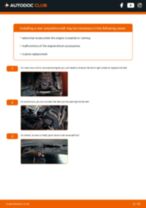

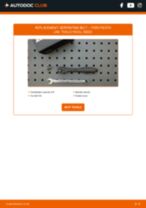
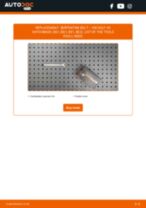
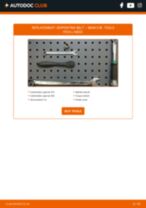
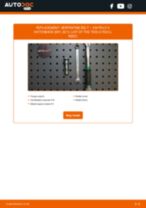
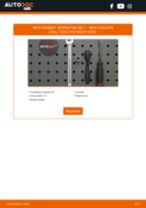
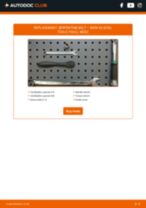
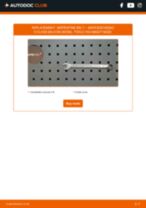
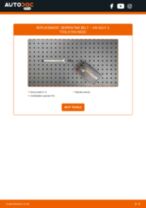
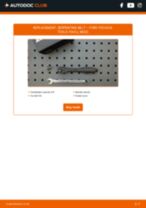
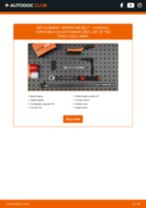
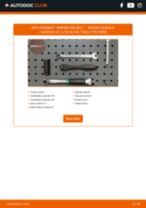
 Play all playlists
Play all playlists






























































